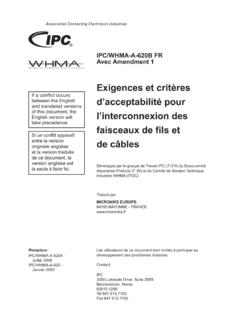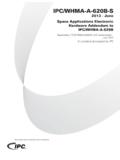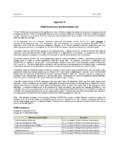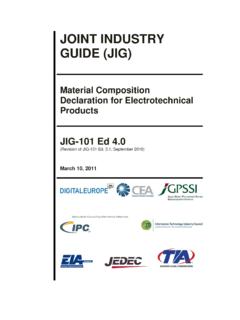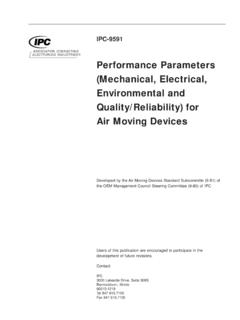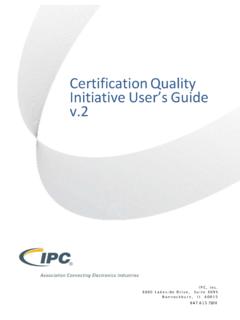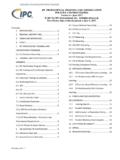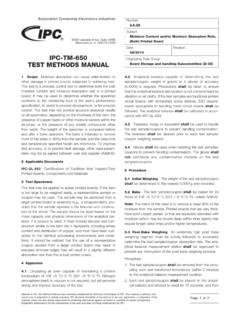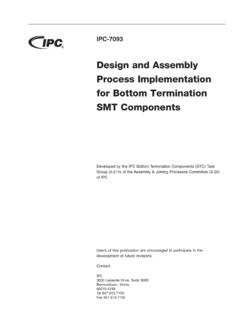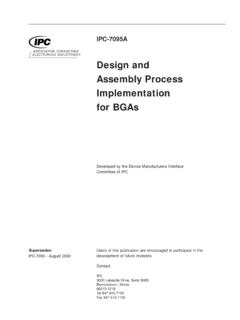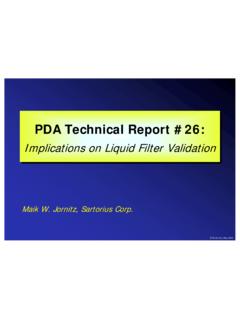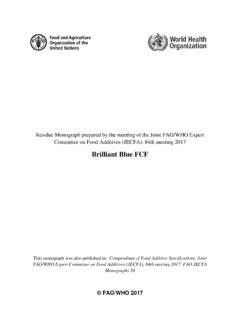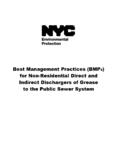Transcription of IPC-TM-650 TEST METHODS MANUAL
1 1 ScopeThis test procedure is designed to measure thelevel of extractable ionic contamination on the surface ofprinted boards and printed board assemblies by ion Applicable DocumentsIDEMA M13-99 Measurement of extractable /LeachableAnion Contamination Levels on Drive Components by IonChromatography (IC)IPC-TP-1043 Cleaning and Cleanliness Test Program, PhaseIII, Water Soluble Fluxes, Part 1: B-24, lnteractions of WaterSoluble Fluxes with Metal/SubstratesIPC-TP-1044 Cleaning and Cleanliness Test Program, PhaseIII, Water Soluble Fluxes, Part 2: B-36, Comparison to Phase1 Rosin BenchmarkIPC-TR-583An In-Depth Look at Ionic Cleanliness TestingIPC-5701 Users Guide for Cleanliness of UnpopulatedPrinted BoardsIPC-WP-008 Setting Up Ion Chromatography Capability 3 Test board and/or printed board assembly for extrac-tion4 Apparatus and Chromatograph capable of accurately measuring ionconcentrations down to parts per million (ppm). Theequipment and chemistry should be set up and standardizedper the manufacturer s instructions.
2 The separation columnand eluent composition should be chosen to provide baselineresolution between the ions of water bath capable of maintaining 80 2 C[176 F]. extraction labware (Ionic free). vinyl gloves. (<3 ppm of Cl). water with a resistivity of at least or ACS grade chemicals for eluent and standard - traceable calibration standards ( ,NIST traceable). Flasks (Typically 25, 50, 100, and 1000ml). Pipetting Equipment (such as Eppendorf).5 Test Extraction ProcedureSelect a low-ion extraction bagsized to fit the board with approximately cm [ in]excess on each side to minimize required extract solution,with several inches at the top to allow for air expansion whenthe bag is an IPC-TM-650 Equipment Vendor Listing for possible clean gloves and or tongs when handling thesamples to be tested. Place each sample in an extraction a 75/25 ( 5%) v/v 2-propanol/H20 solutionfor the :A tolerance was added to the IC method because it isa more specific and accurate method by comparison to theROSE a known volume of the extraction solution tothe extraction bag covering the sample ( mL/cm2of surface area).
3 The same volume of extraction solution to anempty bag of the same lot for use as a the bags in the 80 2 C [176 F] waterbath allowing the water to force most of the air from the not allow any of the water from the water bath into theextract solution in the bags. Fold the top of the bags over thesuspending bar and clip in place with binder clips. This will3000 Lakeside Drive, Suite 309 SBannockburn, IL 60015-1249 IPC-TM-650 TEST METHODS Analysis of Circuit Boards, IonChromatography MethodDate11/12 RevisionBOriginating Task GroupIonic Conductivity / Ion Chromatography TaskGroup (5-32a)Material in this Test METHODS MANUAL was voluntarily established by Technical Committees of IPC. This material is advisory onlyand its use or adaptation is entirely voluntary. IPC disclaims all liability of any kind as to the use, application, or adaptation of thismaterial. Users are also wholly responsible for protecting themselves against all claims or liabilities for patent referenced is for the convenience of the user and does not imply endorsement by solvent loss during the extraction, yet not create asealed bag.
4 Alternatively, the bags may be heat sealed afterforcing most of the air from the the sample to soak for one hour (-0 min., +5min.). the bags from the water bath and allow thesolution within the bag to cool to ambient temperature mix the contents. Transfer solution to virginsample vials for analysis or pull the sample solution directlyfrom the bag using a clean syringe for MANUAL the test sample from the bag using glovedhands or other clean Analytical analysis of the extract solution should be done assoon as possible after extraction, but shall be no longer thanfour days from the extraction the chromatograph per the manufacturer s rec-ommended method and allow it to come to a stable sample solutions for anion and/or cationcontent, utilizing best analytical technique and Calculation of from the chromatograms are typically reportedin parts per million (ppm, g/mL). the surface area of the printed board orprinted board assembly.
5 Recommended area calculations forthe unpopulated printed board and the printed board assem-bly are the following:Printed Board Surface Area = Length x Width x 2 Printed Board Assembly Surface Area = (Length x Width x 2)+ (1 x up to 50% of the printed board area)Great caution should be taken in interpretation and compari-son of these results as assembly surface areas will often devi-ate by more than 10% of its unpopulated :There is no standardized way for estimating the sur-face area of components. Traditionally, values from 10 to 50%have been used for estimating component may be expressed as micrograms ( g) of ionper square centimeter or micrograms ( g) of ion per squareinch based on the extraction volume and the calculatedsample surface area. g/cm2or g/in2= (SC - BL) x Vol / AreaWhere:SC = ppm from IC ( g/mL)BL = ppm from the bag blankVol = final volume (ml)Area = surface area (cm2or in2)Note: ppm value is actually specimen value minus all ions the surface area used in the calculation andthe percentage increased in calculating the surface area of aprinted board Analysis of Circuit Boards, Ion Chromatography MethodDate11/12 RevisionBPage2of36 which may be included for evaluation are asfollows:Anions:BromideChlorideFluoride NitrateNitritePhosphateSulfateCations:Am moniumCalciumLithiumMagnesiumPotassiumSo diumWeak Organic Acids:AcetateAdipateFormateGlutamateMala teMethane SulfonateSuccinatePhthalateOther ions of interest may be extraction techniques (change in time, tem-perature, or extraction solution) may be used as agreedbetween user and supplier (AABUS).
6 Of alternate extraction times include thefollowing: Ten-minute extraction (IDEMA specification for metal parts) Twenty-four hour extraction 16 hour extraction per of alternate extraction temperatures includethe following: Ambient temperature (22 3 C[72 5 F]) of alternate extraction solutions include thefollowing: 10/90 v/v 2-propanol/DI water Deionized Chromatography may be a destructive test forsamples due the high temperature liquid extraction and lack ofprotection for electrostatic sensitive devices (ESD), moisturesensitive devices (MSD), and non-hermetically sealed :Caution should be taken when testing samples thatare intended to be deliverable production Analysis of Circuit Boards, Ion Chromatography MethodDate11/12 RevisionBPage3of3
